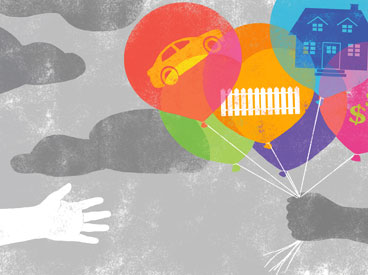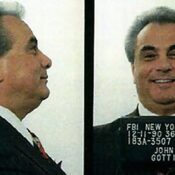But the single biggest cause of exploding private debt, Lawless contends, was a U.S. Supreme Court decision in 1978. “That really opened the floodgates,” Lawless told me. “It effectively deregulated the credit card interest rates. Banks hail that as ‘democratization’ of credit. Their attitude was, we can now charge 30 percent to people who would not qualify for a loan before, because they were too high a risk. For banks, these vulnerable borrowers are the most lucrative borrowers.”
Once the lid was off interest rates, the banks had a field day. They sold as much debt as possible. In the early 2000s, banks and credit card companies blanketed the nation with preapproved credit card offers totaling $350,000 per family. This profligate policy represented a complete reversal in lending strategy. A generation earlier, banks were extremely careful, almost stingy, about granting credit. They were quick to shut it off if a borrower got in trouble. But by the 1990s, banks had come to see slow-paying borrowers who were in financial peril as their most lucrative targets.
One way to get off the treadmill of endless credit or debit card debt is to file for bankruptcy and get a second chance financially, much the way bankrupt corporations do. But as personal bankruptcies rose through the 1990s, banks and credit card companies saw the bankruptcy process as depriving them of the most profitable segment of their business. In the early 2000s, the financial industry began lobbying Congress to close the bankruptcy door, or at least tighten the terms for going bankrupt. They told Congress that “high-income deadbeats” were using bankruptcy to welsh on credit card debt.
In 2005, the financial industry got what it wanted. Congress passed the Bankruptcy Abuse Prevention and Consumer Protection Act, which raised the legal and financial barriers to bankruptcy filings. As expected, the number of personal bankruptcies plunged from just over 2 million in 2005 to about 750,000 in 2006. But after a few years, bankruptcy filings climbed sharply again in the wake of mass layoffs and high unemployment. By 2010, bankruptcies were back over 2 million a year, evidence that even with tougher barriers to bankruptcy, financial distress among the middle class was more acute than five years earlier.
What’s more, when experts examined who was filing for bankruptcy, it turned out that the banks and their lobbyists had misled Congress. As the financial industry had urged, the law was designed to block supposed high-income deadbeats from improperly filing for bankruptcy by instituting a financial “means test.” With the means test as a filter to weed out high-income filers, the average income of bankruptcy filers should have fallen. But that didn’t happen. Researchers saw no significant change.
So instead of filtering out high-income cheats, the new law was actually creating obstacles for honest, financially busted debtors, just as consumer advocates had feared.
Once again, the rules were altered and average Americans got hurt. In the Old Economy, bankers issued credit just to strong, creditworthy customers who typically paid off their debts. The go-go New Economy went for easy credit and higher debt for all, especially people with risky credit records, and many more people wound up in bankruptcy. Over the past several years, as the housing market nosed down and 25 million Americans lost solid, full-time jobs, more and more middle-class families turned to easy credit to try to stay afloat. That added to the profits of banks and credit card companies, but the more money they made, the more middle-class and working families sank into financial ruin.
So the new credit system, coming on top of the great burden shift on pensions and healthcare, has contributed to the unraveling of the American Dream for average Americans and to America’s ever-widening wealth gap.
Rescuing average Americans from the New Economy credit trap will require reversing course—steps such as reimposing ceilings on interest rates and requiring down payments on houses. But the determined efforts of Wall Street banks and congressional Republicans to hamstring the operations of the new U.S. Consumer Financial Protection Bureau shows how hard it will be to do that—unless the middle class demands it.
We are at a defining moment for America. We cannot allow the slow, poisonous polarization and disintegration of our great democracy to continue. We must come together and take action to rejuvenate our nation and to restore fairness and hope in our way of life. We see the challenge. It is now time.
From Who Stole the American Dream? by Hedrick Smith © 2012 Hedrick Smith. Published by arrangement with Random House, an imprint of The Random House Publishing Group, a division of Random House Inc.
Read More: The Post touches on the growing financial struggle of the middle class in these four archival pieces from 1934 to 1952—and it sounds a lot like 2013.
Become a Saturday Evening Post member and enjoy unlimited access. Subscribe now



